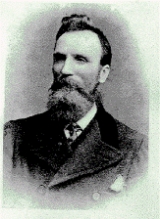
Imperial College of Engineering
Encyclopedia
The Imperial College of Engineering (ICE or ) was founded as a university at Tokyo
in 1873, though its predecessor the existed from 1871. The name "Kobu Daigakko" dates from 1877. In modern-day parlance it would have been called an institute of technology
.
The ICE was under the which was abolished in 1885. Control was then transferred to the and the ICE became part of the Imperial University (later the University of Tokyo
) when it was created by the Ministry of Education in 1886. The ICE was thenceforth the Faculty of Engineering of the Imperial University.
The ICE had the following schools: architecture
, chemistry
, civil engineering
, mechanical engineering
, metallurgy
, mining
, shipbuilding
, and telegraphy
.
Students were required to write notes and graduation theses
in English.
Some of these survive and are on display at the in Ueno Park
, Tokyo (New Building, 2F (second floor)).
Tokyo
, ; officially , is one of the 47 prefectures of Japan. Tokyo is the capital of Japan, the center of the Greater Tokyo Area, and the largest metropolitan area of Japan. It is the seat of the Japanese government and the Imperial Palace, and the home of the Japanese Imperial Family...
in 1873, though its predecessor the existed from 1871. The name "Kobu Daigakko" dates from 1877. In modern-day parlance it would have been called an institute of technology
Institute of technology
Institute of technology is a designation employed in a wide range of learning institutions awarding different types of degrees and operating often at variable levels of the educational system...
.
The ICE was under the which was abolished in 1885. Control was then transferred to the and the ICE became part of the Imperial University (later the University of Tokyo
University of Tokyo
, abbreviated as , is a major research university located in Tokyo, Japan. The University has 10 faculties with a total of around 30,000 students, 2,100 of whom are foreign. Its five campuses are in Hongō, Komaba, Kashiwa, Shirokane and Nakano. It is considered to be the most prestigious university...
) when it was created by the Ministry of Education in 1886. The ICE was thenceforth the Faculty of Engineering of the Imperial University.
The ICE had the following schools: architecture
Architecture
Architecture is both the process and product of planning, designing and construction. Architectural works, in the material form of buildings, are often perceived as cultural and political symbols and as works of art...
, chemistry
Chemistry
Chemistry is the science of matter, especially its chemical reactions, but also its composition, structure and properties. Chemistry is concerned with atoms and their interactions with other atoms, and particularly with the properties of chemical bonds....
, civil engineering
Civil engineering
Civil engineering is a professional engineering discipline that deals with the design, construction, and maintenance of the physical and naturally built environment, including works like roads, bridges, canals, dams, and buildings...
, mechanical engineering
Mechanical engineering
Mechanical engineering is a discipline of engineering that applies the principles of physics and materials science for analysis, design, manufacturing, and maintenance of mechanical systems. It is the branch of engineering that involves the production and usage of heat and mechanical power for the...
, metallurgy
Metallurgy
Metallurgy is a domain of materials science that studies the physical and chemical behavior of metallic elements, their intermetallic compounds, and their mixtures, which are called alloys. It is also the technology of metals: the way in which science is applied to their practical use...
, mining
Mining
Mining is the extraction of valuable minerals or other geological materials from the earth, from an ore body, vein or seam. The term also includes the removal of soil. Materials recovered by mining include base metals, precious metals, iron, uranium, coal, diamonds, limestone, oil shale, rock...
, shipbuilding
Shipbuilding
Shipbuilding is the construction of ships and floating vessels. It normally takes place in a specialized facility known as a shipyard. Shipbuilders, also called shipwrights, follow a specialized occupation that traces its roots to before recorded history.Shipbuilding and ship repairs, both...
, and telegraphy
Telegraphy
Telegraphy is the long-distance transmission of messages via some form of signalling technology. Telegraphy requires messages to be converted to a code which is known to both sender and receiver...
.
Students were required to write notes and graduation theses
Thesis
A dissertation or thesis is a document submitted in support of candidature for an academic degree or professional qualification presenting the author's research and findings...
in English.
English language
English is a West Germanic language that arose in the Anglo-Saxon kingdoms of England and spread into what was to become south-east Scotland under the influence of the Anglian medieval kingdom of Northumbria...
Some of these survive and are on display at the in Ueno Park
Ueno Park
is a spacious public park located in the Ueno section of Taitō, Tokyo, Japan. It occupies the site of the former Kan'ei-ji, a temple closely associated with the Tokugawa shoguns, who had built the temple to guard Edo Castle against the north-east, then considered an unlucky direction...
, Tokyo (New Building, 2F (second floor)).
Graduates
- Kunihiko IwadareKunihiko Iwadarewas a Japanese businessman. A graduate of the Imperial College of Engineering in Tokyo, he worked as a telegraph engineer for the Japanese government. He left Japan in 1886 and traveled to New York. He was introduced to Charles Batchelor, an assistant of Thomas Edison. Iwadare was hired to work...
- Founder of NEC - Tatsuno KingoTatsuno Kingowas a Japanese architect born in Karatsu, Saga Prefecture, Kyushu.He studied in Japan at the Imperial College of Engineering where he was one of the first to graduate in 1879 under British architect Josiah Conder. He visited England and worked in the office of William Burges in 1881-2. He taught...
:ja:辰野金吾, the architect who designed Tokyo Meuseum.

